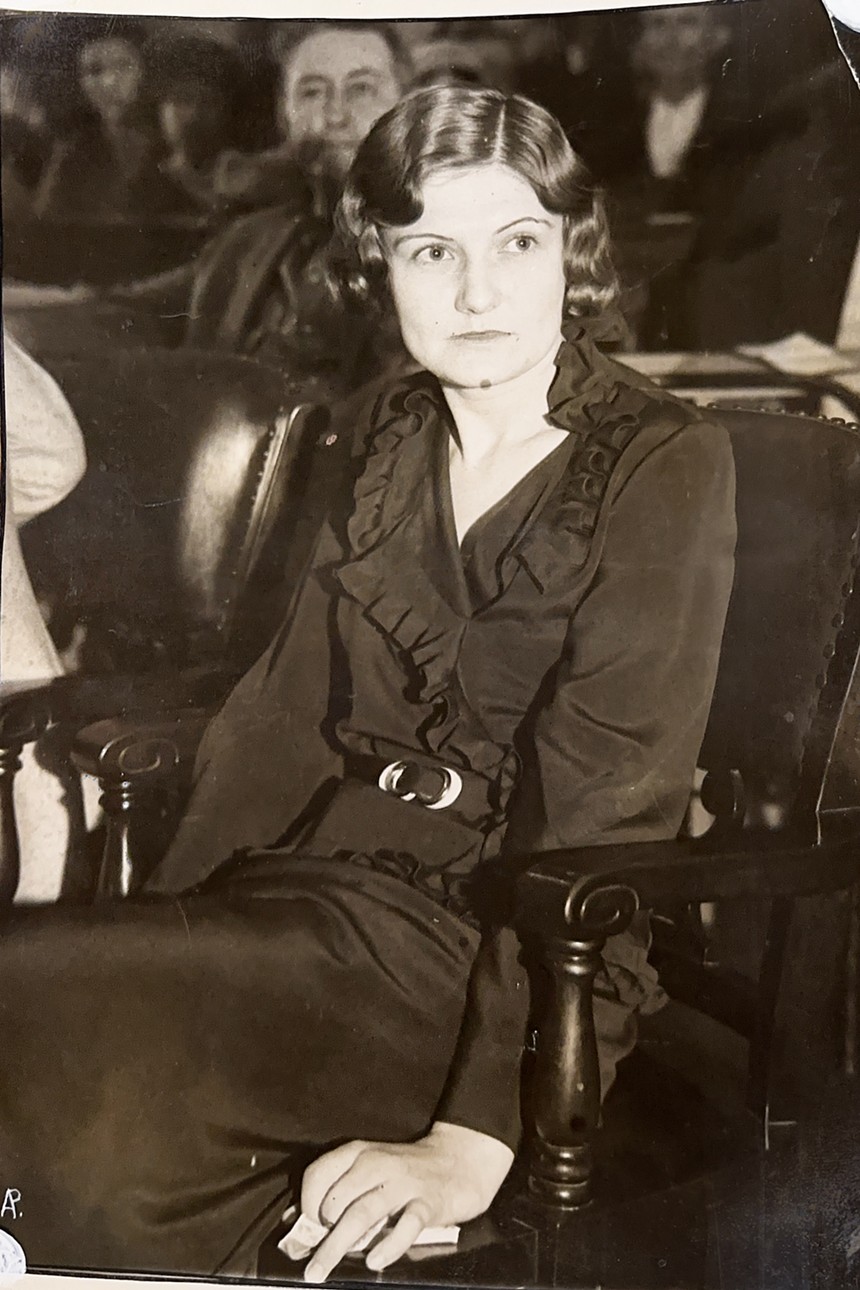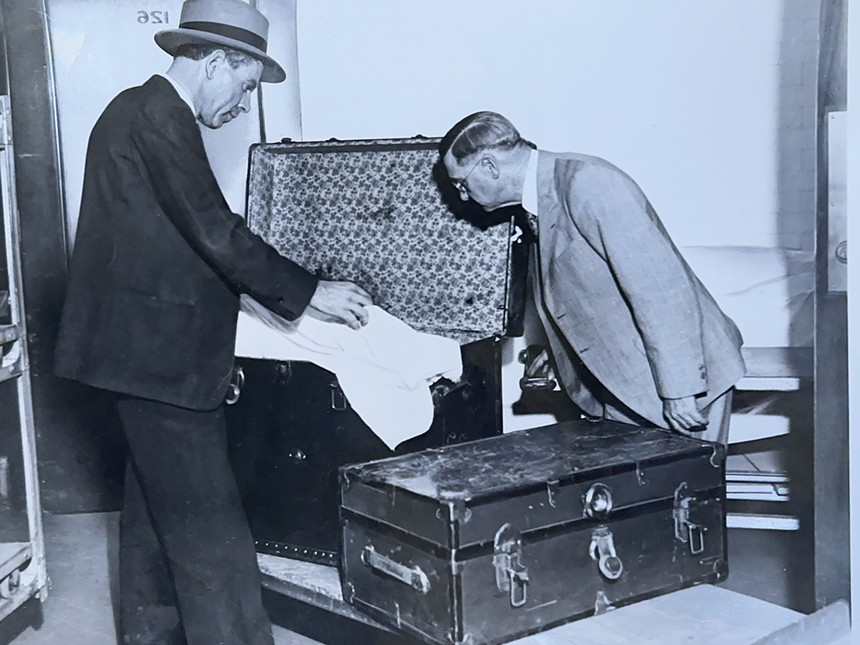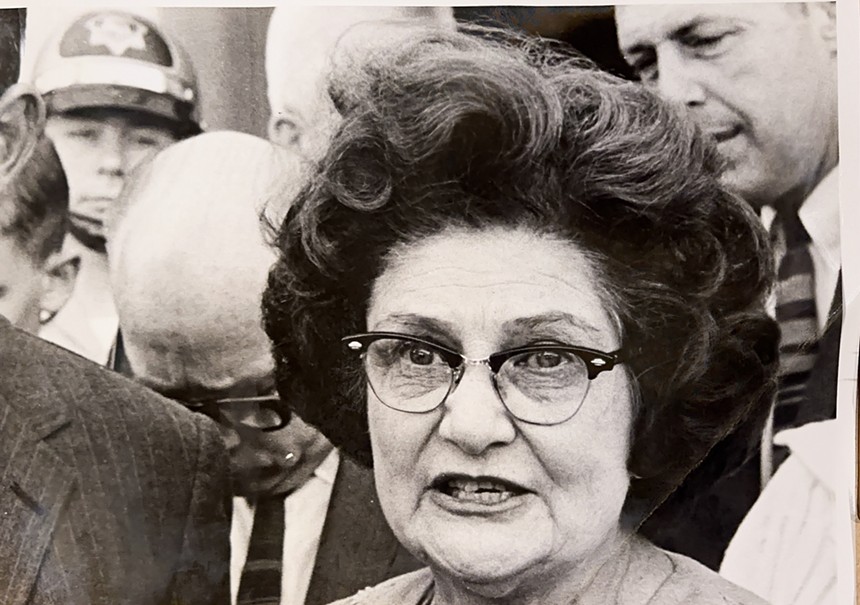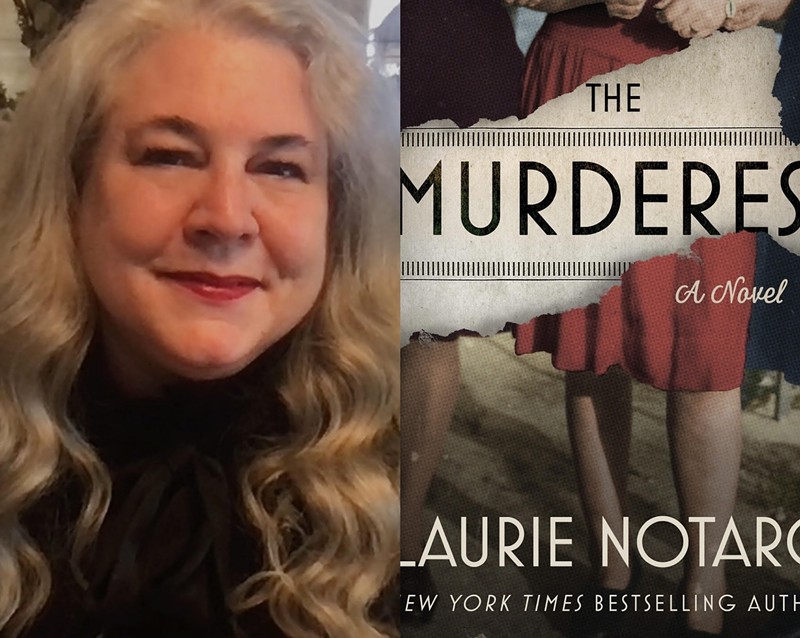The story made headlines nationwide at the time and has captivated people since Agnes “Anne” LeRoi and Hedvig “Sammy” Samuelson were found mangled and dead in L.A.’s Central Station on Oct. 18, 1931. Their friend Winnie Ruth Judd was tried and convicted of one of the "trunk murders" but spared the death penalty at the last minute.
Judd was later declared insane and spent nearly 40 years in jails, an insane asylum and prison. And that’s just the jumping-off point for one of the most bizarre and fascinating crimes of the past 100 years.
Over the years, the story has been the subject of magazine articles, nonfiction books, plays, movies, podcasts and TV shows. And now, a new true crime novel will be released on Oct. 8, just in time for the 93rd anniversary, offering a new perspective on the case.
Laurie Notaro, a former Phoenician known for her first-person humor books, spent a decade doing original research to write "The Murderess: A Novel' (absent her trademark sarcasm). She’ll talk about it on a panel at noon on Oct. 20 at the Crescent Ballroom and sign copies, which will be sold onsite by Changing Hands Bookstore.
“I wanted to prove Ruth didn’t do it,” Notaro says in a phone interview from her home in Eugene, Oregon. “I wanted her to be this misunderstood heroine, and in many, many ways, she was.”

Winnie Ruth Judd on Jan. 19, 1932, as she prepared to go to trial for the murder of Agnes "Anne" LeRoi.
Associated Press
‘A kind, caring person who killed people’
However, Notaro doesn’t buy the idea — put forth in other sources and by many locals throughout the decades — that the petite, mild-mannered Judd committed the crimes in self-defense or didn’t do them at all.“What I found was inconsistent with the story that I knew,” she states. Instead, she adds, “Ruth Judd was a kind, caring person who killed people.”
That doesn’t mean Notaro portrays her as unsympathetic. She used reams of original research — court transcripts, diaries, personal letters, and more — to piece together a nuanced portrait of Winnie Ruth Judd and show the reader her point of view.
Unlike other historical fiction that plays fast and loose with reality for the sake of a good story, though, “I stuck as close to the facts as I possibly could,” Notaro says.
The true tale includes jealousy, a good ol’ boy power network, Depression-era desperation, pretty flappers, sex, drugs and more twists, turns and subplots than any modern murder show.
In addition to being confident Judd was guilty, Notaro is also convinced LeRoi and Samuelson were lesbian lovers, a relationship portrayed in the novel. But she also tells the story of three women who were all victims of their time and gender and got a raw deal in many ways.
Jarrod Riddle, a Phoenix historian and tour guide who’ll be on the Oct. 20 panel with other historians, journalists and more, says, “It’s got every level of intrigue that a case like this could offer. And there’s so many curveballs in the case,” including where and how it really happened and who cut up the body and how.
Riddle adds, “I’m appreciative of Laurie’s efforts to introduce a new take on this.”
After the panel, he’ll give tours of the house on Second Street and Catalina Drive where the murders took place (and which holds the Judd puppet from the 2007 film "Murderess"), but tickets are limited.
All proceeds from the $5 panel admission and $50 tour will benefit the newly formed Preserve Phoenix. Some of their board members and attorney Robert Warnicke, who bought the property in 2015, were instrumental in saving the murder house from the wrecking ball.

Two officials examine the bloodstained trunks left at Los Angeles Central Station in 1931 containing the bodies of two women. Winnie Ruth Judd was convicted of the crime but later declared insane.
AP Newsfeatures Photo
‘I had nightmares’
"The Murderess: A Novel" seems like a wild change of pace for Notaro. In the 1990s and 2000s, she wrote for Phoenix New Times, the Arizona Republic and other local publications and authored a string of self-effacing humor books. Her first, "The Idiot Girls' Action-Adventure Club: True Tales from a Magnificent and Clumsy Life," came out in 2002 and was a New York Times bestseller.Yet this is Notaro’s second foray into historical fiction. In 2016, she released "Crossing the Horizon," which is about female pilots who made the transatlantic crossing before Amelia Earhart but were lost to history. It didn’t sell well, and she took a hiatus from publishing.
Also in 2016, Notaro pitched a novel based on Judd’s story. She wanted to decipher how someone so sweet, helpful and likable — by almost all accounts — could also be a killer.
“I really wanted to know who Ruth was,” she says. “I tried to focus on the part that was human.”
For one, Notaro thinks Judd was bipolar.
“She had several manic episodes in her life going back to when she was in puberty,” she says. At one point, her husband, who was a doctor addicted to narcotics, drove her around the desert all night while she screamed nonstop.
Not to mention, Notaro discovered via her research that Judd was using alcohol — which was outlawed at the time, but moonshine was prevalent — and various drugs.
Notaro is sure that mental illness, substance abuse and the possibility that Judd was stung by a betrayal led to the murders.
“Circumstance and your mental state of mind have everything to do with everything,” Notaro says. “You can’t say, ‘I’d never do that.’ You don’t know.”
But trying to occupy Judd’s mind was brutal.
“I wrote this book in 40 days,” Notaro recalls. “I could not wait for it to get off my shoulders. I had nightmares, and some of them were very, very real, and they were creepy.”

Winnie Ruth Judd in 1969, in custody after seven years of freedom under a new name following an escape — one of many — from Arizona State Hospital.
AP Newsfeatures Photo
‘People have different theories’
While Notaro says she believes Judd killed her friends, she readily admits no one knows the whole truth. Judd died in 1998 and took most of her secrets to the grave.But Notaro’s friend Robrt Pela, another former New Times writer, found a confession letter in 2014 that had been sitting in the Arizona Historical Society archives for many years.
Although it was one of many such letters, Notaro says it’s “the only thing that fits the evidence. It was premeditated, and she did shoot them in the head point-blank.”
On top of that, Samuelson’s great-niece, Sunny Worel, made it her life’s goal to research everything related to the three women and visit every place they’d been. A research librarian, she collected every piece of ephemera, photograph and newspaper clipping she could and created a documented timeline.
When Worel died in 2014, her mother bequeathed the archives to Pela, who gave them to Notaro.
“Sunny’s stuff was so invaluable,” Notaro says. “She was a monster for details.”
Poring through the research allowed her to know the Judd of 1931 rather than the octagenarian that late local author Jana Bommersbach interviewed for her 1992 nonfiction book, "The Trunk Murderess: Winnie Ruth Judd."
“This is the story that I have researched and found,” Notaro says. “Everybody else’s story is different. People have different theories.”
The Murderess Book Signing & Discussion tickets are online at crescentphx.com.












